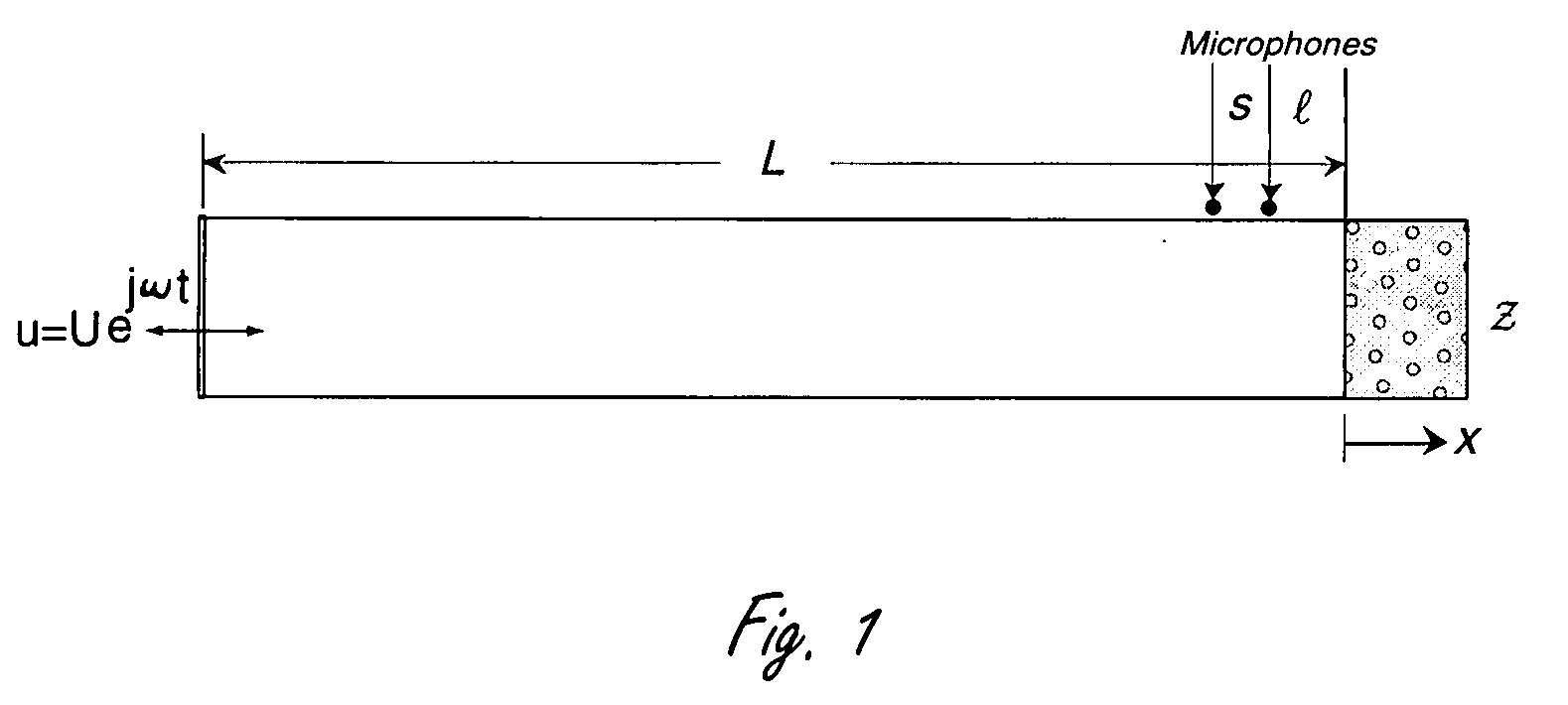Acoustic structure of porous material
a porous material and acoustic structure technology, applied in the field of three empirical equations in frequency domain, can solve the problems of inability to accurately provide, inability to accurately predict sound absorption coefficient, and high inaccuracy in modeling porosity, so as to simplify material similarity analysis and save database storage. , the effect of saving the database storag
- Summary
- Abstract
- Description
- Claims
- Application Information
AI Technical Summary
Benefits of technology
Problems solved by technology
Method used
Image
Examples
Embodiment Construction
Impedance Tube and Material Structure Modeling
[0018]Let us consider one dimensional acoustic wave equation:
∂2p(x,t)∂t2=c2∂2p(x,t)∂x2(1)
and the boundary conditions
∂p(x,t)∂x|x=-L=-ρ∂u(t)∂t(2)p(x,t)u(t)|x=0=Zb(3)
where c is the speed of sound. ρ is the density of air. u(t) is the external velocity excitation source. Zb is the surface acoustic impedance of the porous material as shown in FIG. 1. p(x, t) is the sound pressure distribution in the tube. The solution of p(x, t) in Eq. 1 can be expressed as
p(x,t)=c1(ωt+kx)+c2(ωt-kx)wherek=ωc(4)
is the wave number of the sound. By using the boundary conditions 2 and 3 and defining
r=c1c2,
we can obtain the surface acoustic impedance
Zb=-ρcr+1r-1(5)
[0019]To solve for two unknowns, Zb and r in Eq. 5, we need one more equation that can be derived by two sound pressure p1=p(−l) and p2=p(−l−s), see FIG. 1, in the form of transfer function.
G12=p1p2,
to solve for p. After manipulation using Eq. 4, we can solve for r as
r=G12--ksks-G122k(+s)(6)
[0020]In prac...
PUM
 Login to View More
Login to View More Abstract
Description
Claims
Application Information
 Login to View More
Login to View More - R&D
- Intellectual Property
- Life Sciences
- Materials
- Tech Scout
- Unparalleled Data Quality
- Higher Quality Content
- 60% Fewer Hallucinations
Browse by: Latest US Patents, China's latest patents, Technical Efficacy Thesaurus, Application Domain, Technology Topic, Popular Technical Reports.
© 2025 PatSnap. All rights reserved.Legal|Privacy policy|Modern Slavery Act Transparency Statement|Sitemap|About US| Contact US: help@patsnap.com



